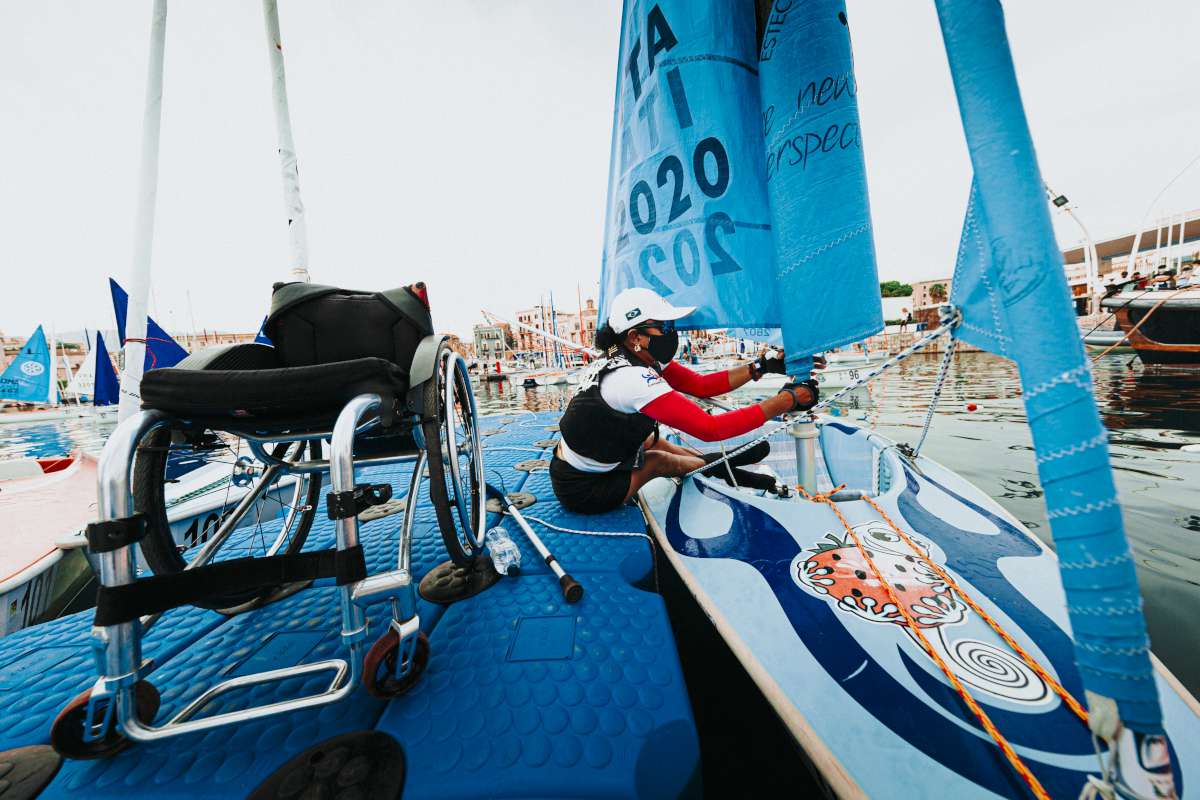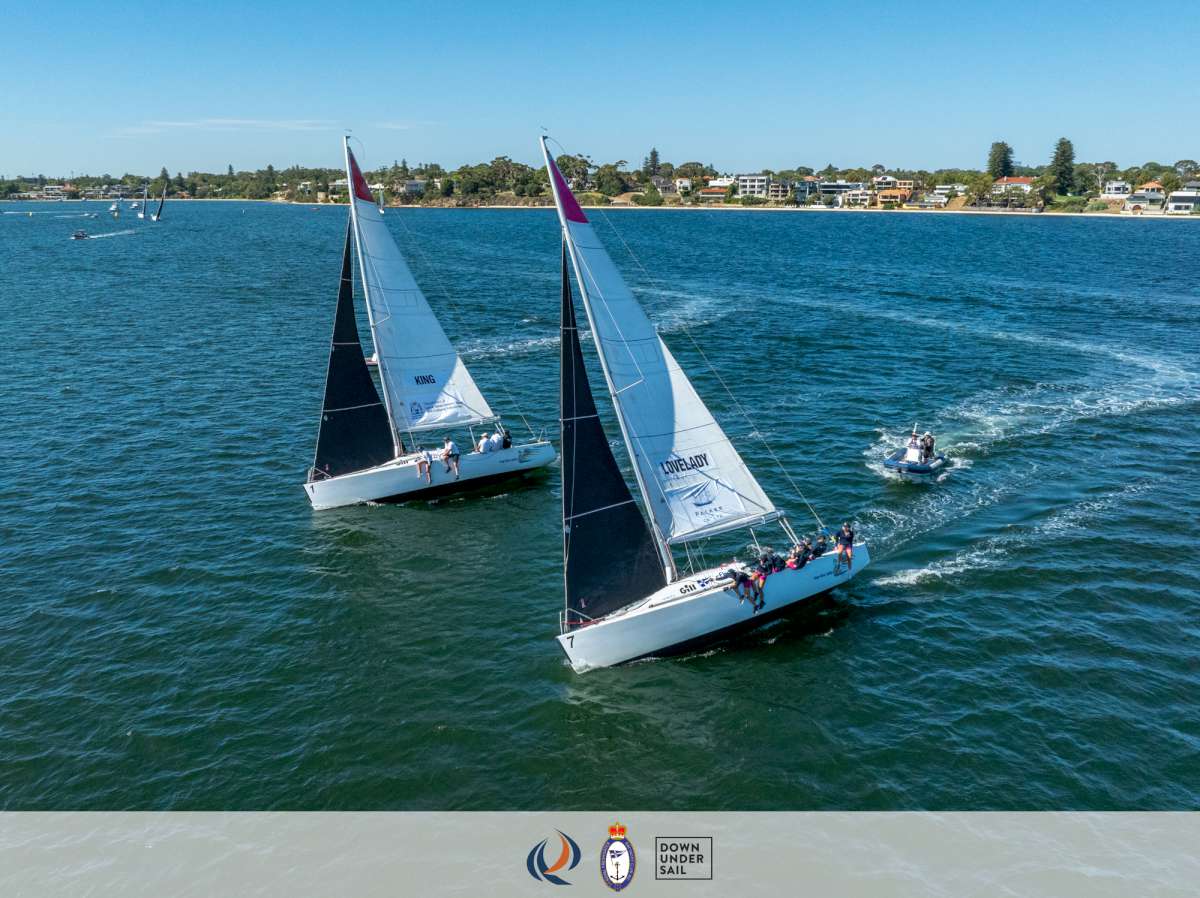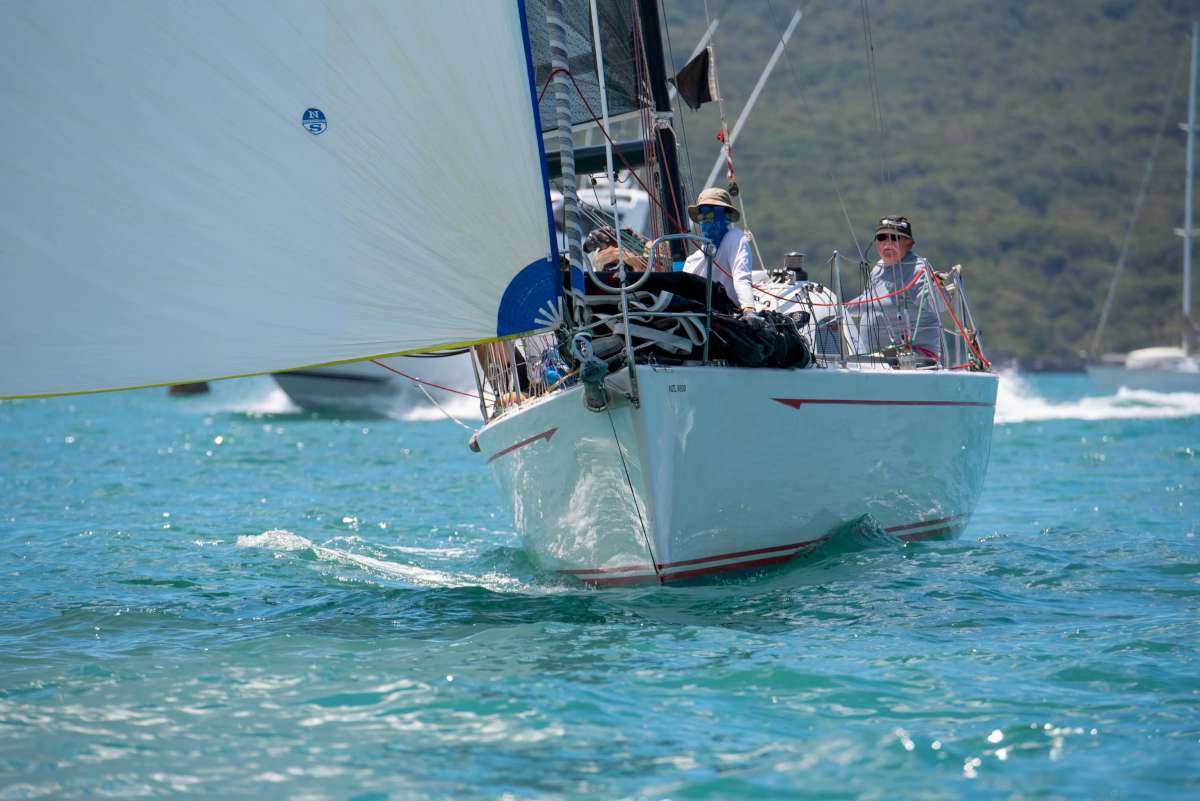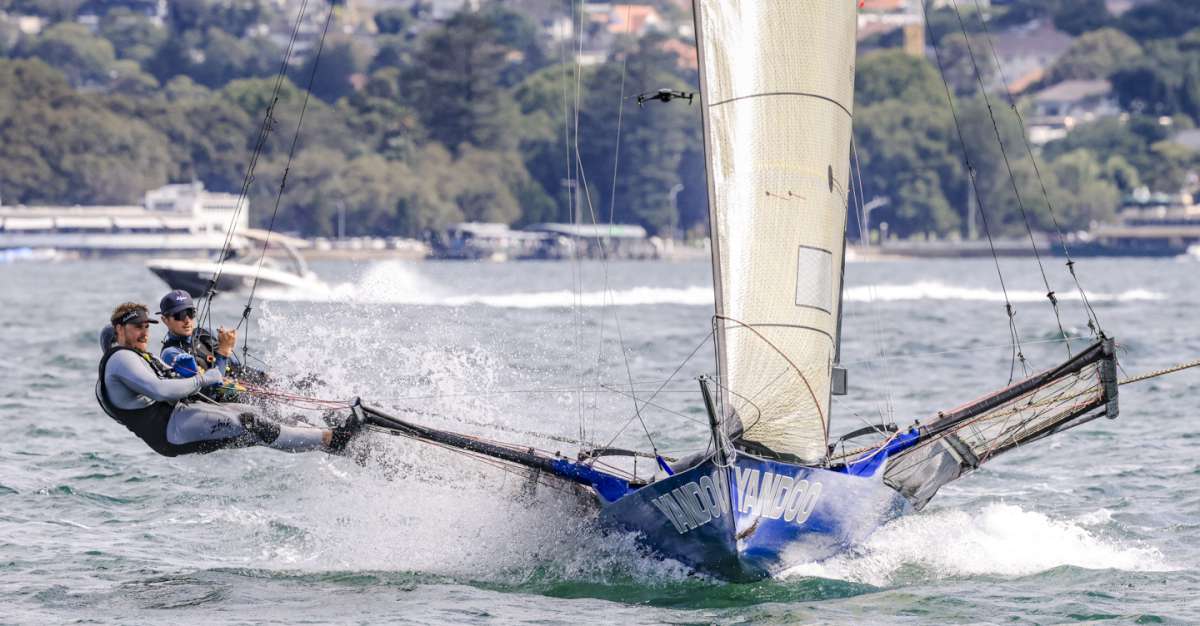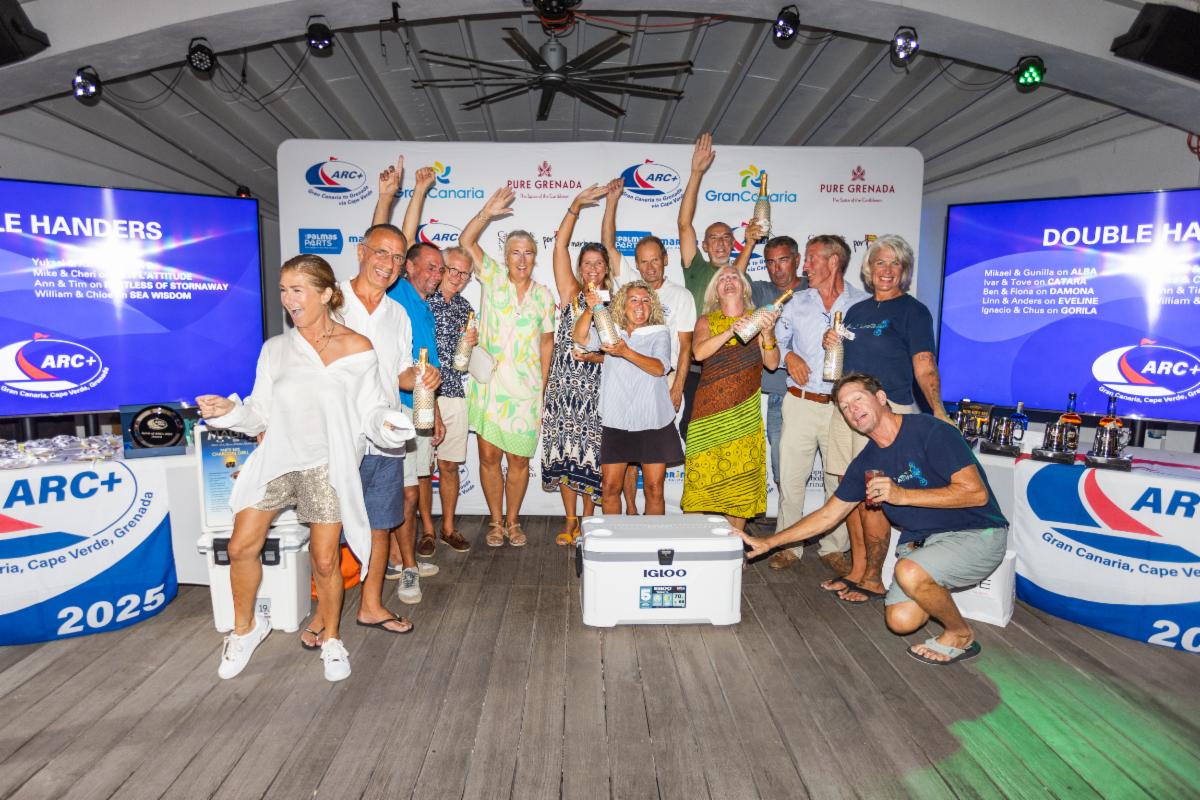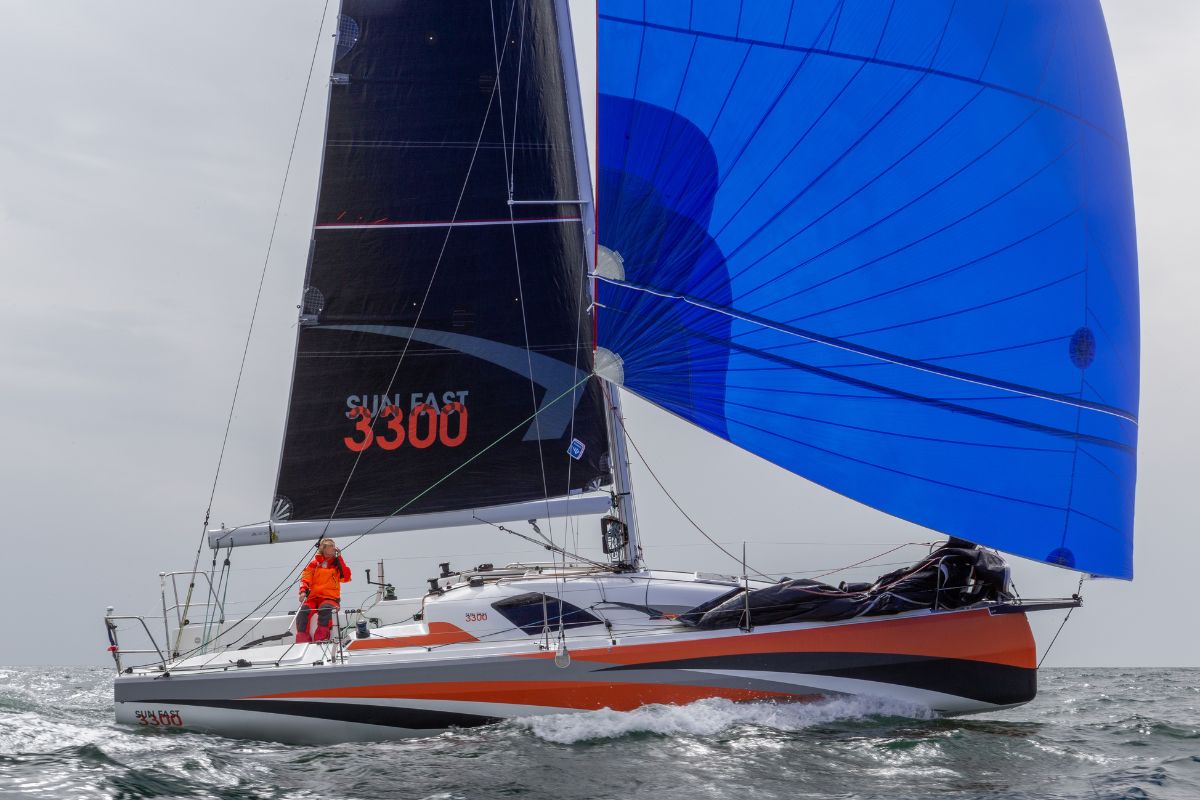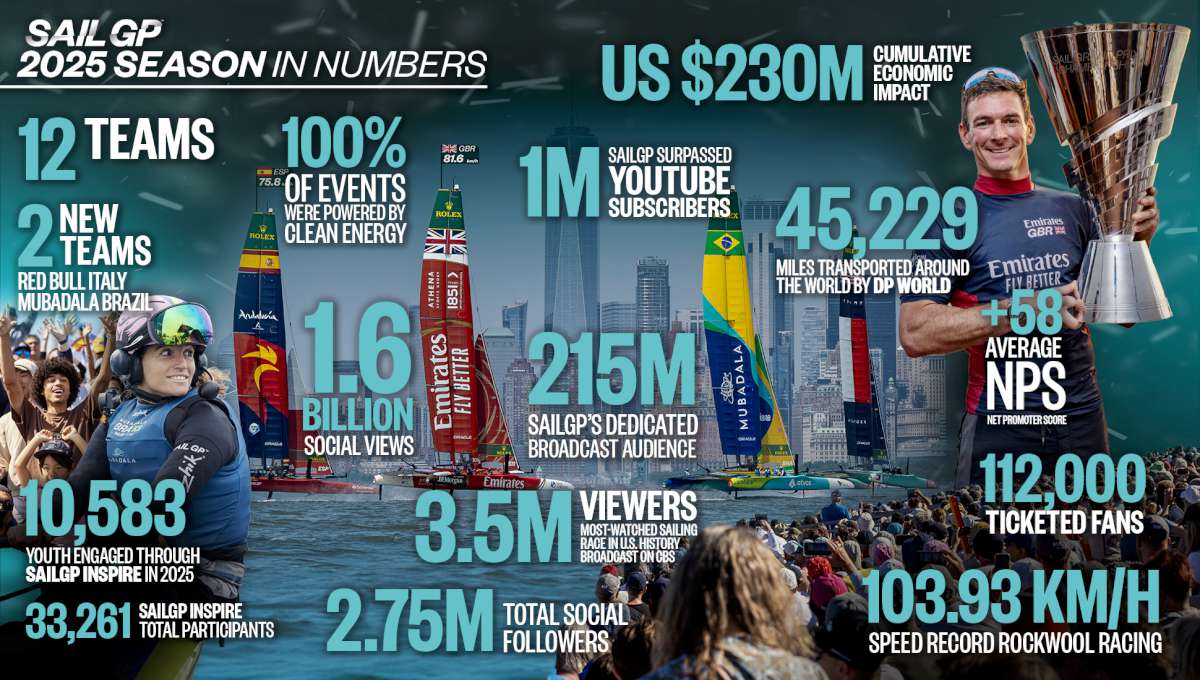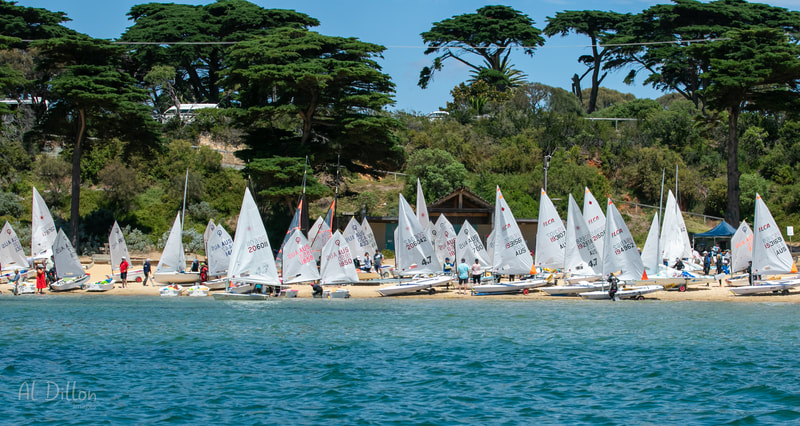Practical: Electrics
Bruce and Sandy Meldrum lead the way through the maze of upgrading your power system to meet the demands of cruising in the energy-hungry 21st century.
Over the years it is our impression that one of the most talked-about boat toMany of us own or buy older yachts and inevitably as part of our upgrading process tackle the electrics. The older electrical systems are under threat from ever-increasing consumption from the wonderful electronic toys available to the cruising sailor and at the same time influenced by new technologies such as LED lights etc. Much of what follows can also apply to more modern yachts where an upgrade is in process or there is concern about battery capacity.
Energy-hungry systems
Recent experiences with friends who have purchased modern production yachts find some have battery management problems. The root cause is usually very energy-hungry lighting systems leading to larger batteries and bigger alternators.
Early in 2006 we came into the custodianship of a lovely Jarkan 10.5. Justine II was 26 years old at that point but had been the recipient of an extensive upgrade program by the previous owner. One area that remained fairly original was the electric infrastructure, which had obviously been struck with the “Topsy” effect. We immediately started to work out how to improve it.
Electrical layout
Our Jarkan had an original cartridge-fused switchboard with some added circuits protected with breakers to power the recently fitted electronics.
The switchboard was over the chart table along with the cartridge fuses and used many redundant toggle switches for functions switched elsewhere such as lights etc. This inevitably led to long runs of wire back and forth, all of it unlabelled.
Battery switching
The description “selected battery” is where this all started because it was the main battery management switch (the usual one or two or both configuration), which was not ideal because these are not always rated for engine-starting circuits. In the three-position system that is fairly traditional in yachts and small boats the switching thus constrained the system to have one main power system from which all other systems are distributed: engine, lights, electronics, navigation lights and anchor winch etc.
There sometimes can be some unfortunate interactions between systems if the common wiring is not of low enough resistance or where, for instance, an engine start resets the electronics due to a dip in the battery voltage.
If the desire is to “save” the engine battery once the engine running is done, the switch is normally manually switched from wherever it was (usually both) back to two (house). This would apply when say going under sail or coming to anchor so all systems are then dependent on the house battery. One has to remember to do the switching back and forth and always remember it is best not to switch while the engine is running.
Battery arrangements
The first thought in this exercise was to separate the power systems in the boat into independent battery systems to avoid interaction and preserve the engine battery mainly for starting. The intention was also to make it as far as possible a set-and-forget system. After sleeping on the problem we ended up with three batteries.
Battery one
The engine battery (#1), of course, and from this by choice direct to the anchor winch via a heavy-duty circuit breaker and also the fridge compressor clutch and the engine-room blower, all of which are only used when the engine is running anyway. The blower normally comes on with the engine but can be switched independent of engine operation.
The engine battery could then be de-rated in size because it became protected from any other standing functions. A 980 CCA/50AH spiral-wound absorbed glass-matt battery was used, which is more than adequate for the 29hp Nanni diesel and gives us a sealed battery in case of emergency. This is a small battery but it has lots of grunt.
The key specification here is the cold cranking amps (CCA). That is what is important when starting ð not so much the capacity of the battery in ampere-hours. Capacity is the ability of the battery to provide X amps for Y hours, or X x Y ampere-hours at specified currents. All available literature indicates it is safe to have an AGM-type battery charged in conjunction with wet (flooded) batteries because they have the same characteristics.
This is not true for the gel-type sealed batteries, which can be overcharged (see the excellent article on batteries by John Tylor, October 2006 CH).
Battery two A
The existing heavy-duty 225AH wet house battery (#2A) runs the interior and exterior lights (not nav lights), the entertainment and auxiliary systems such as fans, pumps, marine sanitation device, macerator on the toilet and the electric bilge pump. The bilge pump is powered by a 24-hour always-on circuit from the house battery since the 80-watt solar cell charges it directly.
Battery two B
A radio battery (#2B) which runs the VHF and HF radios, navigation and electronics systems, the autopilot and the navigation light systems.
We used a deep-cycle 130AH wet battery. If the chartplotter and associated instruments are switched off, the GPS receiver and display draw around 0.1 amps, which will run for a long time on the radio battery (around 1300 hours). Given the independent systems the engine can now be fired up and the navigation systems do not even notice.
Switching scheme
The switching scheme required that the engine battery isolator be of the highest current rating for the starting circuit, at least 400 amps intermittent and up to 1000 amps for 15 seconds. That requirement is not met by the smaller three-position one/two/both switches (225 amps), which are in common use and in our case used for the house and radio batteries.
In our system the three position switches on house and radio circuits are normally set to position two (position one being designated the engine battery), so that in normal operation once the ship is powered up no more switching of batteries is required until shutdown and all three systems are independent.
However, if in an emergency or in a case of battery failure, by switching either house or radio circuit switches to position one, the power supply for those circuits is switched to the engine battery. As well, in the “both” position, any two or all three batteries can be hard-connected in parallel for emergency cranking or unexpected battery failure situations or charging from near flat.
Battery charging
We have made use of voltage-sensitive relays (VSRs) to automatically cross-connect the batteries for charging at any time independent of the boat's use status. The three batteries are not deliberately connected in parallel either in normal operation or in shutdown. These clever switches remain normally open and inactive until the sensed voltage at the supply side of the VSR has risen to 13.7 volts (such as a battery on charge). The VSR then closes, thus connecting the supply side to the load, which in this case is the next battery. They have various ratings, 100 amps being a popular size, but do not have conventional contacts, being a solid-state switch device with a small “on” resistance that can effectively be ignored because the voltage drop is small during charging.
When the sensed voltage drops below about 12.8 volts – which will occur during normal battery use (no longer charging) or during cranking at start-up – the VSR quickly disconnects and protects both the VSR from excessive current and any other equipment on the load battery that may be sensitive to voltage fluctuations such as navigation systems.
This simple system has stopped our navigation system re-setting every time the engine is started. There are two types of VSRs available: unidirectional with defined supply and load sides such as VSR#1 and bi-directional, which senses the rising voltage on either side such as VSR#2.
Alternator and solar panels
In our system battery-charging input can come either from the engine alternator into the engine battery number one or from the solar panels connected to the house battery, number two. The two inter-battery charging paths are arranged first with a unidirectional VSR between the engine battery and the radio battery because the charge is always one-way, and second a bi-directional VSR between the engine and house batteries because the charge current can be either way.
When the alternator is charging during engine running and the engine battery voltage rises past 13.7 volts, both VSRs cut in and connect the house and radio batteries to the engine battery.
Alternatively when the engine is not running but the sun is out, the house battery receives charge from the solar panel. When the ship is dormant it is quite usual for the house battery to rise to 13.7 volts. The house battery then connects backwards via the bi-directional VSR#2 to the engine battery, which is usually fully charged anyway and in turn connects via the unidirectional VSR#1 to the radio battery.
On the mooring in sunny weather the system charges all three batteries from the solar panel and when we come on board all batteries are always full. One could, of course, add a wind generator applied to the house battery and enhance this system.
Set and forget
The great virtue of this system is that it is set and forget and no battery switching is required under normal circumstances on a voyage.
To keep an eye on things we have installed a digital battery voltage and current-monitoring meter or DMM. The voltage sensing for the DVM part is switched to any of the three batteries for individual monitoring once the VSRs have dropped out and the batteries are independent. The three battery grounds are brought together to a common point and a 500-amp current shunt for the current function of the DMM sits between battery common and the ship and engine ground.
It is illuminating to see just how much current various ship systems use. Of course, the charging current can also be seen because the current indicated is either in or out of the batteries (total). Because the current is common to all batteries this system does not differentiate but in switching something on and watching the current change one knows which circuit it belongs to.
Cheap and simple
There are much more sophisticated battery management systems available but this one is relatively cheap, simple, and with a bit of practice the voltage at the DVM is a good indicator of battery state.
We could also consider a smart regulator on the engine alternator, which would help fast charging but might not work so well with this leap-frogging system. The 60-amp alternator on the Nanni is sufficient and since the vessel has a refrigeration system powered by an engine-driven compressor, the engine gets at least one hour's running a day, more than enough to keep the batteries up, even after a hard night of cards.
The switchboard
We resolved to put all the circuit-breakers, VSRs and main battery switching together in one place, which could be out of the way, and the functional switching for items that did not have their own switches in the usual place above the chart table. The main switchboard is seldom touched during voyages because functions such as pumps are usually just on or are functions that are switched at the module such as lights, radio or electronics.
Functions are sensibly split, grouped and separately protected by appropriate capacity breakers such as various individual pumps, the VHF and HF radios, cabin lights port and starboard, auxiliary circuits port and starboard, blowers, navigation lights and electronics etc. On this switchboard any circuit can be isolated. The new breaker box is under the companionway steps with the battery switching and voltage-sensitive relays together. This area is well ventilated with the constantly running engine-room blower.
Circuit-breakers
On the question of breakers: most modern small boat installations use variations of the beautiful moulded panels available with small neat DC breakers serving the dual role of circuit protection and as switches for the various functions. They have to be small to fit enough into a sensible-sized panel, which is usually located above or near the chart table. These small breaker/switches are not cheap and cost upward of $40 each so the breakers alone for say a 20-circuit panel could be more than $800, plus the cost of the panel. We looked around and found plenty of experience in the industry of using ordinary domestic breakers at around $5-6 to do the same job.
Most domestic breakers of a given current limit are rated to 250V AC or 50V DC. Why the difference?
When any switch contacts open, particularly with substantial load current such as in a fault protection situation in a breaker, an arc forms across the contacts as they move apart. Obviously the higher the voltage and current in the circuit the stronger the arc and the greater distance across the opening contacts before the arc extinguishes. This adds up to contact damage and limited life. With AC current such as our 50Hz domestic supply, the polarity of the voltage reverses 100 times a second so in AC circuits the arc extinguishes more quickly (in 1/100th of a second), hence the higher voltage rating.
When DC is interrupted the arc persists until the contacts are far apart because there is no polarity reversal. Thus the same breakers must be de-rated from say 250-volt AC to 50-volt DC.
Furphy
In consulting a colleague from a large breaker supply company, the data tables suggest that the current-tripping capacity is no different from AC to DC and the concern over precise tripping currents is a bit of a furphy anyway. If the circuit is operating normally at more than 50-75 percent of the breaker tripping current then the circuit should be re-designed. The breaker is there for catastrophic overload of say two to three times working current.
This all goes back to the correct grouping of devices into low-current consumers on a sensitive breaker (say the VHF on a five-amp breaker) and high-current devices on an insensitive breaker (say the HF on a 25-amp breaker), not VHF and HF grouped together because it is fairly obvious that the VHF with a fault will melt down before it blows the 25-amp breaker.
Cable numbering
All cables are numbered in our new system with a simple four-digit code, the first two numbers being the breaker or circuit number. The normal professional method of numbering cables is with click-over number ferrules. These are a bit pricy for the layman and come in minimum quantities of 1000 or so. We opted to use our pre-existing label printer set to a small font on 1/4″ tape, to stick the number on the cable end and cover it with a short length of clear heat-shrink tube before connecting the cable. Now we know where it goes and where it has come from. To avoid chafing, cable groups are either cable-tied or run for protection in the neat split loom tube available in a variety of sizes.
In the commercial electrical world there is also available a wealth of ancillary equipment, such as ready-made switchboards, rails to mount the domestic breakers together with, stackable terminal blocks, ground strips (most of them brass but avoid the ones with steel screws).
Switches
Our new simpler (breaker-free) switch panel uses rocker switches from a well known electronics store at $3.60 for 10 or more, rated at 30 amps at 12 volts and include a nice LED indicator. We have had these in service in previous boats for some years without problem.
Energy conservation
Another issue tackled in our program was energy conservation. We resisted the temptation to go to bigger batteries, which are not always the answer because they become a problem to charge and weigh a lot more. We chose instead to trim the power consumption in heavy use areas such as cabin lighting.
The old bugaboo of keeping batteries up during passages goes away if care is taken at the consumption end of the process. In the saloon many folks use the tried-and-true $25 “Lucky” brand 12-volt fluorescent battens, which tyWe have taken out the old “Lucky” brand fluorescent battens and mounted a 12-volt LED string. I found these in a LED shop on Botany Bay; they are about 600mm long with white LEDs every 8mm or so and potted in a flexible string of silicon rubber.
One of these is shown in a photo with the LED string looped and fixed inside the old “Lucky” batten, and it is just as bright as the old double fluoro and draws 1/4 the current at 0.3 amps. Sadly these have become hard to obtain as the LED market evolves into canned solutions.
We flirted briefly with the high-efficiency fluorescent battens that use the very efficient PL series of fluoro tubes and which draw about one amp at 12 volts. Recently a very effective LED strip light in a rotatable batten has become available at a major chandlery. We will get rid of the last fluorescents and use these instead.
There are also now available LED replacement modules in the same form factor as the QH halogen downlights, both in warm yellow as well as bright white and although not quite so intense as the QH globes they will consume about 1/20th of the current at around 0.2 amps and can be quite adequate.
Disaster strikes
During the re-wiring program we had the misfortune to have the vessel completely ransacked, losing a lot of gear and causing a lot of damage to the saloon headlining, necessitating complete replacement. In the process of repairs we added a number of new LED downlight fittings from a major chandlery. These are only 20mm deep so they fit into the narrow void between the headboards and the cabin roof. Each fitting has an array of nine LEDs and draws just 0.1 amps. There are in total 14 in the main saloon and 21 in all for just two amps if all are on, which is about the same current as one conventional incandescent bulb and half as much as a single QH downlight.
The effect is stunning, with a bright yet diffuse glare-free and evenly distributed light, which makes the area feel like daylight. There are six zones so groups of fittings can be selectively turned on, such as a group of four around the compression post, which supports the main settee table, so these light up the table in a pool of light.
An average evening of playing cards of say five hours with half the saloon lights on loses just five ampere-hours or about 1/40th of the house battery capacity, hardly a worry. At $13.95 each, one can quickly sink $200-$300 into lighting, but this is probably considerably cheaper than upgraded alternators or bigger battery banks.
Converting nav lights to LEDs
There are a number of solutions for converting nav lights. A tyThere is available an increasing range of quite reasonably priced sealed LED navigation lights with quite powerful specific red and green LEDs, some of which claim to be approved. So what does “approved” mean? This was well covered in “The lowdown on Lights” in the June 2007 issue of CH but is summarised in the sidebar box.
We replaced most navigation lights with LED models, the bow lights with faired/sealed port and starboard modules, and both the tricolour and the anchor light in the existing masthead fitting with LED towers, both different types. A downside of the LED towers is that they can emit some radio frequency electrical noise and in our case being right next to the VHF antenna on the mast cap, one has to turn the squelch level up a bit at night. The steaming light was left as an incandescent because it is only used when the engine is running, similarly the deck lights under the radar dome mount, which are sealed beam units and are yet to be equaled by an LED unit, but it won't be long.
A caution on LED towers
It is worth noting in passing that some LED towers may not give the correct visual colours when used in a multi-lensed mast-cap tricolour. Don't forget the same bulb must shine through all lenses, so the light source must contain in its spectrum the colour of the lens to able to be seen on the outside.
The problem with LEDs is that there are no naturally white LEDs. The ones that emit near-white use a phosphor rather like a fluorescent tube to convert the energy in what may be a single-colour LED (usually ultraviolet), so the eventual content of the visible light output of the LED may not contain much output at green or red if the phosphor is poorly chosen at manufacture. The caution is to look carefully at the package or ask for advice. However, these are great for anchor lights where near-white is very visible, and they are very economical and long-lasting.
Polarity and wiring issues
Some of these modules/fittings described here are polarity insensitive, so insertion polarity for globe replacements is irrelevant, others are not. For the LED modules with a single central contact it may be necessary to check and change the polarity of the supply at the light fitting. It is not usually possible to damage LED fittings or modules by reverse polarity; they just don't work backwards. Some of the fittings described above such as the rotatable battens are polarity-sensitive, some such as the LED downlight arrays are not. A good guide is whether there is a red/black wire pair or just a pair of wires of the same colour, eg white. In the case of a plug-in LED tower, if it does not go first time, take it out, rotate 180¡ and, if the fitting allows, re-insert. If the fitting has offset locating pins and dual contacts, the wire feed to it may need to be reversed.
The great thing about LED modules is that they draw so little current that one can step down to a lighter gauge of cable with no fear of voltage drop. The smaller currents are more friendly on switches but care must be taken in choosing the correct breaker fault-tripping current for circuit protection. Even with all our internal lights on we still only draw two amps (port or starboard sides) so a 10-amp breaker may be too large and a five-amp breaker might be safer using the rule of thumb that the circuit should be protected with a breaker having a trip current of around 2-3 times the working current.
No longer an issue
Battery management is much less of a problem now as the main killer (cabin lighting) is no longer an issue at night, nor is the anchor light. The profligate laptop with the PC-based charting software is still in the system but we tend to be a bit more sparing with its use and rely more on the chartplotter, which in most cases is more than adequate. All in all, the electrics re-build has resulted in a very pleasing outcome, the major gain being freedom from worry about battery switching and constant monitoring.
AUTHORS BIO
Bruce and Sandy retired in 2003. Bruce originally trained as an electrical engineer and physicist and spent more than 40 years pursuing his passions at the CSIRO National Measurement Laboratory. Sandy retired from pharmaceutical quality control. Their Jarkan 10.5 is based in Sydney and follows a series of smaller yachts over the years. They have cruised the east coast extensively from the Whitsundays to Tasmania.
WHERE ARE WE NOW?
Having observed over a number of recent cruises which of our constantly running electrics is the most energy-hungry, they fall in the following order:
* The laptop at around 5-6 amps when used for charting, TV or playing a DVD.
* The complete navigation electronics (chartplotter/wind/speed/depth etc) at 2.5-3 amps.
* The automatic pilot averages around one amp when working 25-30 percent duty cycle.
* The entertainment radio/CD at one amp.
* The toilet system cell at one amp (runs continuously).
* Half of the cabin interior lights on at about one amp (used to be more like 5-7 amps).
* The VHF at standby at 0.4 amps.
* The LED navigation lights (or the LED tricolour) at 0.2 amps (used to be 3-4 amps).
* The anchor light (very bright) at 0.15 amps (used to be 1.5 amps).
WHAT IS LEGAL?
The specifications for the visibility of navigation lights are found in the Colregs and the requirements boil down to visible distance, visible angle and colour or content. To be approved it would need to be tested by a verifying authority, which may increase the price. It would be tempting fate to go with unapproved lights given a number of night-time accidents in recent years; one would need to be very sure that the unapproved lights had the required visibility or an insurance company or accident investigation would have you on toast (apportioning blame in maritime accidents).




